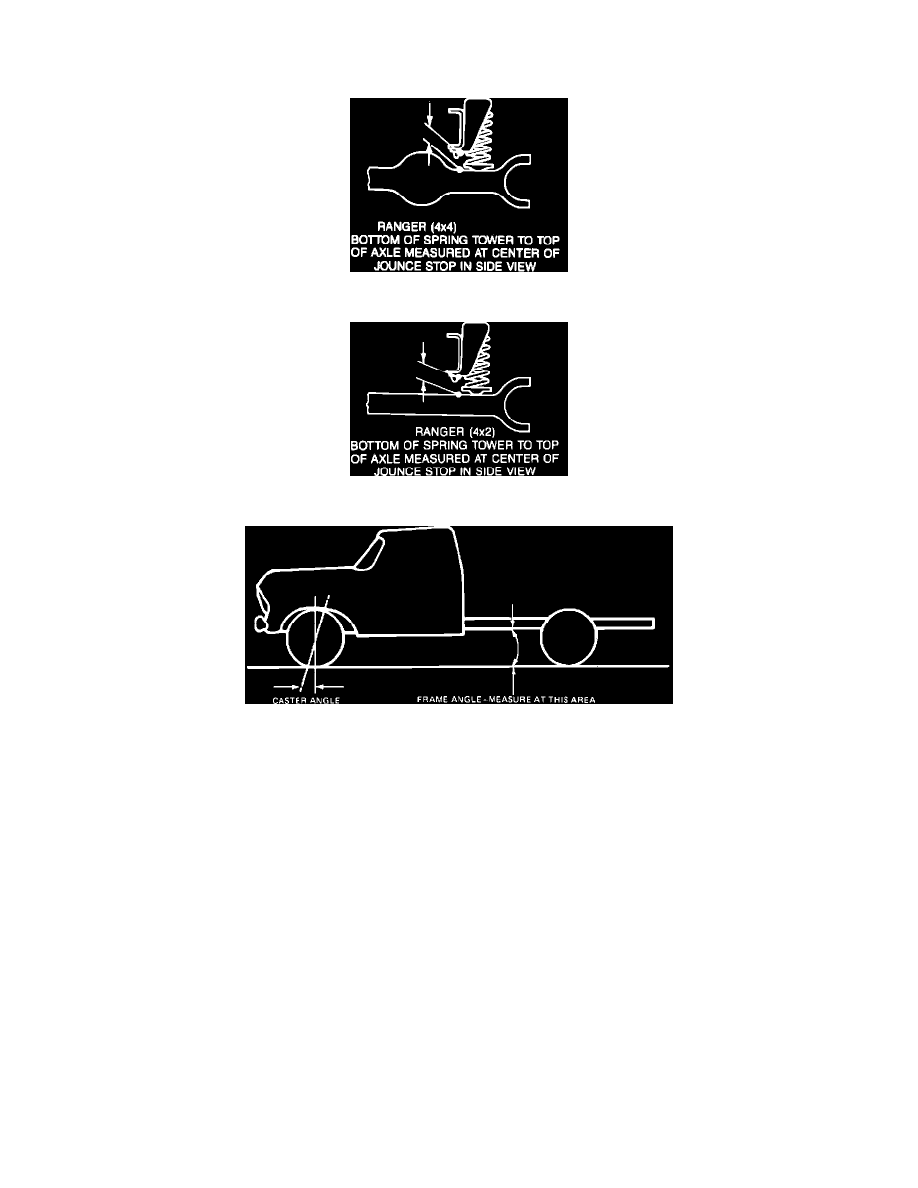Ranger 2WD V6-245 4.0L (1990)

Alignment: Service and Repair
Ride Height Correction
Fig. 5 Front Ride Height. 4x4 Models
Fig. 6 Front Ride Height. 4x2 Models
Fig. 7 Frame Ride Height
To determine riding height, measure distance between bottom of spring tower and top of axle, Figs. 5 and 6. Refer to Steering and Suspension/Tires,
Wheels and Alignment/Specifications/Mechanical to determine alignment specifications for the particular riding height of truck. If riding height does
not fall within specifications, it should be corrected by installing proper springs or by use of shims. Alignment equipment indicates a true reading only
when frame is horizontal. Measure left and right hand angle as shown in Fig. 7. If frame is not level (due to tire, spring or load differences), the caster
angle reading must be modified to compensate for frame angles. If front is higher than rear, subtract amount of angle from reading. If front is lower than
rear, add angle. Check frame angle with a protractor and take frame angle measurement on flat area immediately adjacent to rear spring front hanger.
Axles are not to be bent or twisted to correct caster or camber readings.
